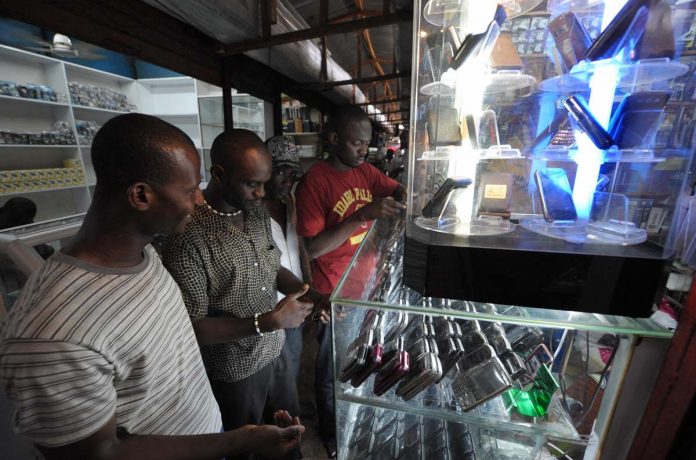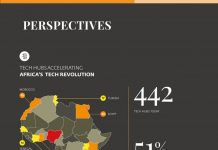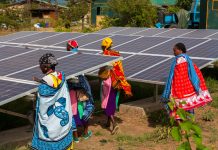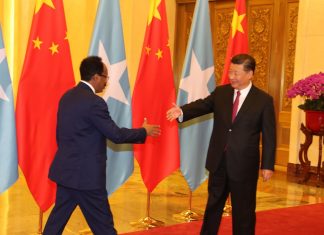Information and communications technology generally is seen as an economic enabler, one that can be leveraged to assist key areas such as education, healthcare, governance, and job creation. According to the World Bank, Africa’s ICT market could be worth more than US$150 billion by 2016, provided it continues its current impressive double-digit growth. Below, Gareth Mellon, ICT program manager at the Africa division of market research and growth strategy consultants Frost & Sullivan, outlines six important ICT trends in Africa that deserve attention in 2016. – AfSB Staff
1. Public sector actors become more involved. As governments increasingly see connectivity as a critical means to encourage economic growth, we can expect them to become more involved in the market, helping to stimulate telecommunications investment in some cases, but also threatening to add increased uncertainty in volatile markets.
While MTN Nigeria’s massive fine has naturally attracted the most attention, regulators in Kenya and Uganda have also imposed recent penalties, and the fall-out from each of these points to the potential impact that both the government and regulators have on the telecommunications market. As debates concerning the allocation of spectrum, the implementation of national broadband plans and the provision of eServices continues unabated (not forgetting, of course, the constant delays in digital migration), expect the role of public sector bodies to become even more influential.
[In August, the Nigerian government fined MTN a record $5.6 billion for “non-compliance” and “obvious disregard” of the rule of law” when the South African-based operator failed to disconnect 5.2 million unregistered SIM card users from its network. The fine was reduced to $3.9 billion in November.]
2. Fixed line makes a comeback. While technically not a ‘comeback’ in many African countries, where fixed line hardly got out of the starting blocks, demands for fiber connectivity have soared. Across the continent, submarine cables have boosted international connectivity and, while terrestrial coverage remains a challenge in most countries, investments in fiber backhaul and access layers have picked up.
As this proliferation continues, high capacity last-mile access is becoming more viable and FTTX [fiber-to-the-x] services have become established in key markets such as Kenya, Nigeria, and South Africa. While individual services remain relatively expensive for early-adopters, ongoing investment will lead to price reductions, making fixed line more attractive for both businesses and consumers.
3. Industry consolidation to meet infrastructure costs. Etisalat’s recent acquisition of a majority stake in Maroc Telecom means that five major multinational operators now account for over 60 percent of all telecommunications subscribers in Africa. Consolidation in the telecommunications market is driven by a desire for scale to help overcome margin pressures: the provision of network infrastructure is enormously costly and all operators have been subjected to the worrying reality of increasing infrastructure costs versus declining average revenue per user (ARPUs). With increased pressure on operators to provide LTE [long term evolution, a 4G wireless communications standard] services, which requires further investment in existing infrastructure, Frost & Sullivan expects this drain to continue.
While large-scale mergers typically attract most of the attention, it is also worth noting changing market dynamics as smaller telecommunications players find it increasingly difficult to remain competitive. South Africa’s Cell C has made headway in claiming some portion of the market from the two dominant players, but its sustainability remains questionable. Meanwhile, mutterings in Kenya point to Orange’s troubles in achieving profitability in a market dominated by Safaricom. And, across the continent, even start-ups promoting new technologies (for example, LTE or fiber) struggle to break the dominance of the big players reflecting how difficult it remains for late-entry operators to establish any kind of foothold.
4. Content is king in the battle for access to customers. The other driver of telecommunications consolidation concerns the battle to retain access to customers. In the customer’s eyes, the question is now: “Who can provide me with the best access to everything I need?” And while operators currently occupy an enviable position in this respect, other telecommunications providers—including hardware providers, device manufacturers, and OTTs [over-the-top content providers]—are all seeking to offer aggregation services.
The key differentiator will be content, in particular high-demand content, whether it is local or global, live or recorded. DStv remains the undisputed leader in content distribution across Africa, but its dominance is being challenged by the growth of alternative channels such as FTTH [fiber-to-the-home] and 3G or 4G. Over the past year, the battle lines have been drawn in key markets such as Kenya, Nigeria and South Africa, and the first casualties have already been incurred. The year 2016 will quickly reveal which services are critical to customer requirements and, ultimately, how profitable they can be.
5. Telcos showcase ‘digitalization.’ Typically, telecommunications distinguish between their consumer and enterprise offerings, and the latest fad in the enterprise market is ‘digitalization’—identifying all areas of a business that can be transformed by ICT in order to offer integrated and enhanced products and services.
The starting point will be to show how connectivity can improve profitability in sectors as diverse as oil exploration, agri-processing, and the clothing industry, but expect ICT providers to start positioning themselves as complete, end-to-end partners with the ability to transform their clients into digital pioneers. Machine learning will be critical to this implementation, but watch out for other buzzing terms similar to wearables, the sharing economy, and the blockchain.
6. The mobile payments ecosystem expands. Africa has been the birthplace of mobile payments and one cannot ignore this key feature of the ICT landscape on the continent. In 2016, we can expect growth in three areas.
Firstly, while Kenya is often cited as the forerunner in mobile payment proliferation, this leadership is anticipated to be challenged by countries like Tanzania, Zimbabwe, and Zambia, all of which have experienced significant growth in mobile payments. Secondly, while peer-to-peer transactions currently account for three-quarters of all payments, other areas such as merchant payments and international remittances should show healthy adoption, expanding the broader mobile payments ecosystem.
Finally, operators and banks have typically spearheaded mobile money development, but there are a growing number of actors seeking to grab a share of the market, concludes Frost & Sullivan. The most prominent amongst these are the major Internet players—Google, Facebook, and Apple—who, although not necessarily established in Africa, are leveraging their communication platforms to obtain access to customers’ wallets.













